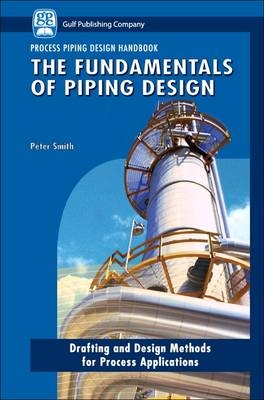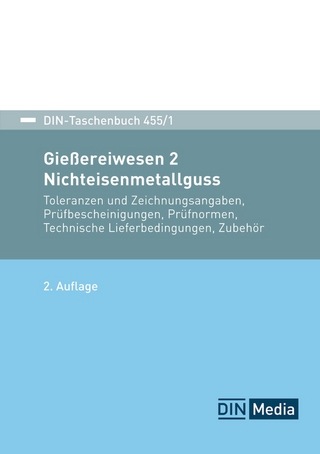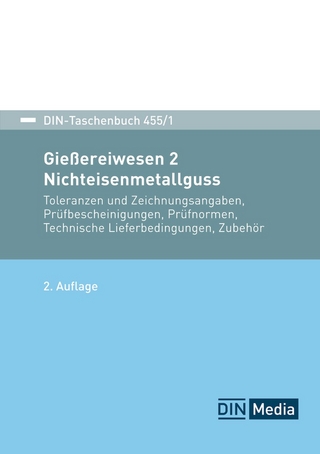
The Fundamentals of Piping Design
Gulf Publishing Company (Verlag)
978-1-933762-04-3 (ISBN)
Written for the piping engineer and designer in the field, this two-part series fills a void in piping literature, since the Rip Weaver books of the '90s were taken out of print at the advent of the Computer Aid Design (CAD) era. Technology may have changed, however the fundamentals of piping rules still apply in the digital representation of process piping systems. The Fundamentals of Piping Design is an introduction to the design of piping systems, various processes and the layout of pipe work connecting the major items of equipment for the new hire, the engineering student and the veteran engineer needing a reference.
Peter Smith is an independent consultant based in Europe with 30 years of experience in the onshore and offshore sectors of the oil and gas industry. He has worked on design and construction projects for, Exxon, Total, Mobil, Woodside Petroleum, Shell, Statoil, Bluewater, Elf, and Huffco Indonesia.
List of Figures
List of Tables
Foreword
Preface
1 Piping Codes, Standards, and Specifications
1.1 Introduction
1.2 Definitions
1.3 Codes
1.3.1 American Society of Mechanical Engineers Boiler Pressure Vessel Codes
1.3.2 American Society of Mechanical Engineers B31, Codes for Pressure Piping
1.4 Standards and Specifications
1.4.1 American Society of Mechanical Engineers
1.4.2 American Petroleum Institute
1.4.3 American Society for Testing and Materials
1.4.4 American Society for Nondestructive Testing
1.4.5 American Society for Quality
1.4.6 American Welding Society
1.4.7 American Water Works Association
1.4.8 Copper Development Association
1.4.9 Compressed Gas Association
1.4.10 Canadian Standards Association
1.4.11 Expansion Joint Manufacturers Association
1.4.12 Manufacturers Standardization Society of the Valve and Fittings Industry
1.4.13 National Association of Corrosion Engineers
1.4.14 National Fire Protection Association
1.4.15 Pipe Fabrication Institute
1.4.16 Society of Automotive Engineers
2 Piping Components
2.1 Introduction to Piping Components
2.2 Pipe
2.2.1 Pipe Sizes
2.2.2 Pipe Ends
2.3 Pipe Fittings
2.3.1 Butt-Weld End Fittings
2.3.2 Socket-Weld and Threaded-End Fittings
2.3.3 Flanged Joints
2.4 Valves
2.4.1 Valve Codes and Standards
2.4.2 Classification of Operation Valves
2.4.3 Valve Classification
2.4.4 Valve Components
2.5 Bolts and Gaskets (Fasteners and Sealing Elements)
2.5.1 The Process of Joint Integrity
2.5.2 Flange Joint Components
2.5.3 The Flanged Joint System
3 Metallic Materials for Piping Components
3.1 Properties of Piping Materials
3.1.1 Chemical Properties of Metals
3.1.2 Mechanical Properties of Metals
3.1.3 Elongation and Reduction of Area
3.1.4 Physical Properties of Metals
3.2 Metallic Materials
3.3 Alloying of Steel
3.4 Types of Steel
3.4.1 Mild (Low-Carbon) Steel
3.4.2 Medium-Carbon Steel
3.4.3 High-Carbon Steel
3.4.4 High-Tensile Steel
3.4.5 Stainless Steel
3.5 Steel Heat-Treating Methods
3.5.1 Annealing
3.5.2 Normalizing
3.5.3 Hardening
3.5.4 Tempering
3.6 Nonferrous Metals in Alloying
3.7 Material Specifications
3.7.1 American Society for Testing and Materials
3.7.2 Unified Numbering System of Ferrous Metals and Alloys
4 Roles and Responsibilities
4.1 The Lead Piping Engineer
4.2 Piping Materials Engineering Group
4.2.1 Project Lead Piping Materials Engineer
4.2.2 Senior Piping Materials Engineer
4.3 Piping Design Group
4.3.1 Project Piping Area/Unit Supervisor (Squad Boss)
4.3.2 Project Piping CAD Coordinator
4.3.3 Project Piping Designers-Checkers
4.4 Piping Materials Control Group
4.4.1 Project Lead Piping Materials Controller
4.4.2 Project Piping Materials Controller
4.5 Piping Stress Engineering Group
4.5.1 Project Lead Piping Stress Engineer
4.5.2 Project Piping Stress Engineer
4.6 Other Engineering Disciplines Involved
4.6.1 Process Engineering
4.6.2 Mechanical Engineering
4.6.3 Instrument Engineering
4.6.4 Civil Engineering
4.6.5 Structural Engineering
5 Projects
5.1 Project Types
5.2 Project Phases
5.2.1 Feasibility Phase
5.2.2 Conception Phase
5.2.3 Front-End Engineering Development Phase
5.2.4 Detailed Engineering Phase
5.2.5 Construction Phase
5.2.6 Precommissioning and Commissioning Phase
5.2.7 Startup and Handover to the Owner
6 Fabrication, Assembly, and Erection
6.1 Codes and Standards Considerations
6.2 Fabrication Materials for Piping Systems
6.3 Fabrication Drawings
6.4 Fabrication Activities
6.4.1 Cutting
6.4.2 Beveling
6.4.3 Forming
6.4.4 Bending
6.5 Welding
6.5.1 Welding Processes
6.5.2 Preheating
6.5.3 Heat Treatment
6.6 Brazing and Soldering
6.7 Protection of Carbon Steel in Corrosive Services
6.7.1 Corrosion Allowance
6.7.2 Internal Galvanizing of Pipe and Piping Systems
6.7.3 Pipe Cladding
6.8 Assembly and Erection
6.8.1 Alignment
6.8.2 Flanged Joints
6.8.3 Threaded Joints
7 Inspection and Testing
7.1 Piping Codes
7.2 Types of Examination
7.2.1 Visual Examination
7.2.2 Liquid Penetrant Examination
7.2.3 Magnetic Particle Examination
7.2.4 Radiographic Examination
7.2.5 Ultrasonic Examination
7.3 Testing of Piping Systems
7.3.1 Some Limitations on the Pressure Testing of Piping Systems
7.3.2 Special Provisions for Testing
7.3.3 Preparation for Leak Test
7.4 Leak-Testing Methods
7.4.1 Hydrostatic Leak Test
7.4.2 Pneumatic Leak Test
7.4.3 Combination Hydrostatic-Pneumatic Leak Test
7.4.4 Initial Service Leak Testing
7.5 Choice of Testing Medium
7.6 Test Pack
7.7 Punch List
A Listed Material
A.0.1 Ferrous Metals
A.0.2 Nonferrous Material
A.1 American Petroleum Institute
B General Engineering Data
Index
| Erscheint lt. Verlag | 1.4.2007 |
|---|---|
| Verlagsort | Austin |
| Sprache | englisch |
| Maße | 156 x 234 mm |
| Gewicht | 640 g |
| Themenwelt | Technik ► Bergbau |
| Technik ► Elektrotechnik / Energietechnik | |
| Technik ► Maschinenbau | |
| ISBN-10 | 1-933762-04-7 / 1933762047 |
| ISBN-13 | 978-1-933762-04-3 / 9781933762043 |
| Zustand | Neuware |
| Informationen gemäß Produktsicherheitsverordnung (GPSR) | |
| Haben Sie eine Frage zum Produkt? |
aus dem Bereich


